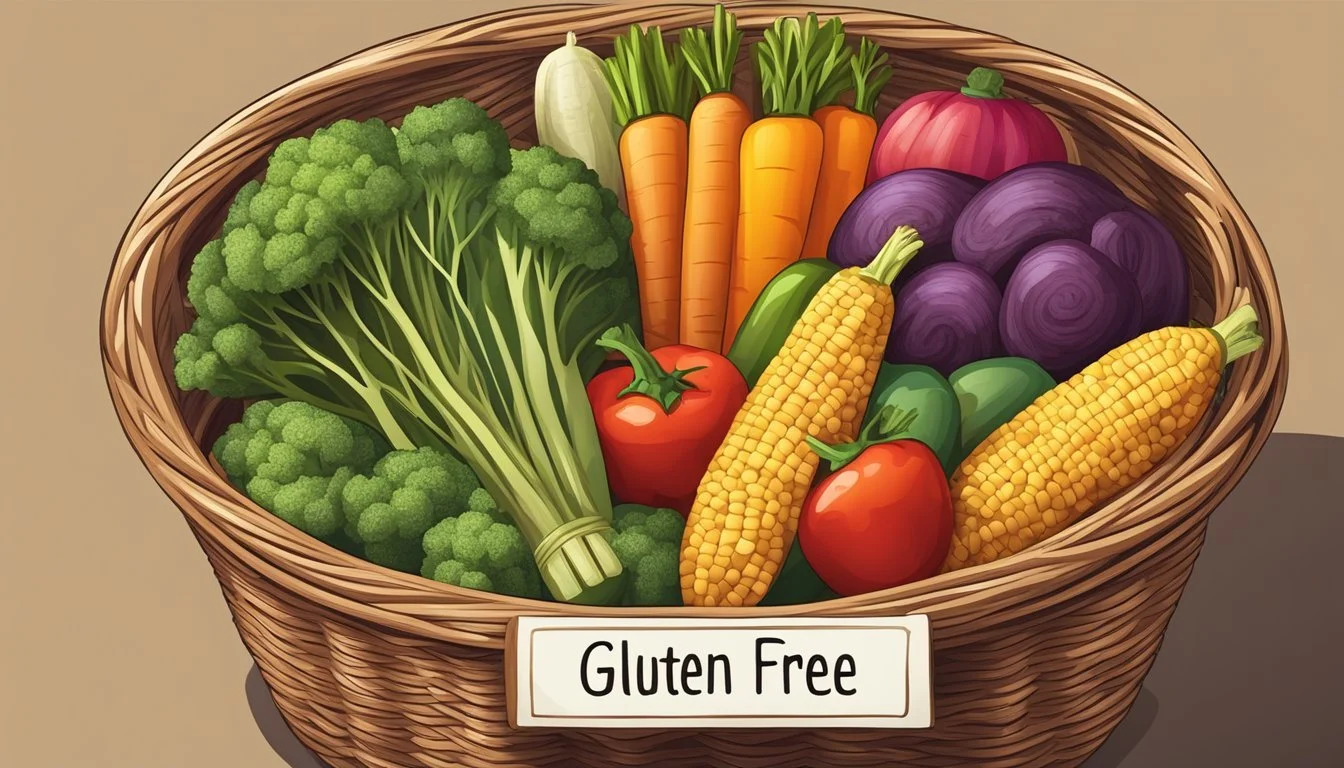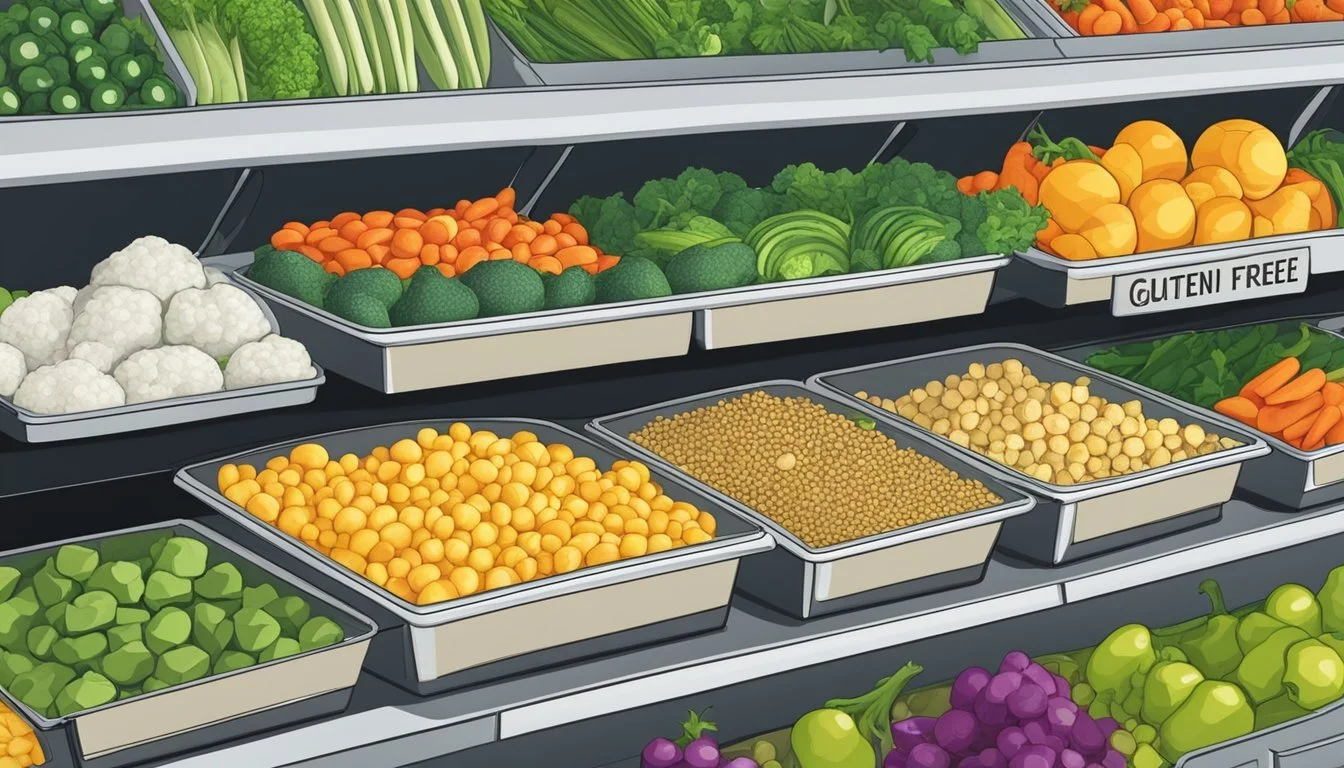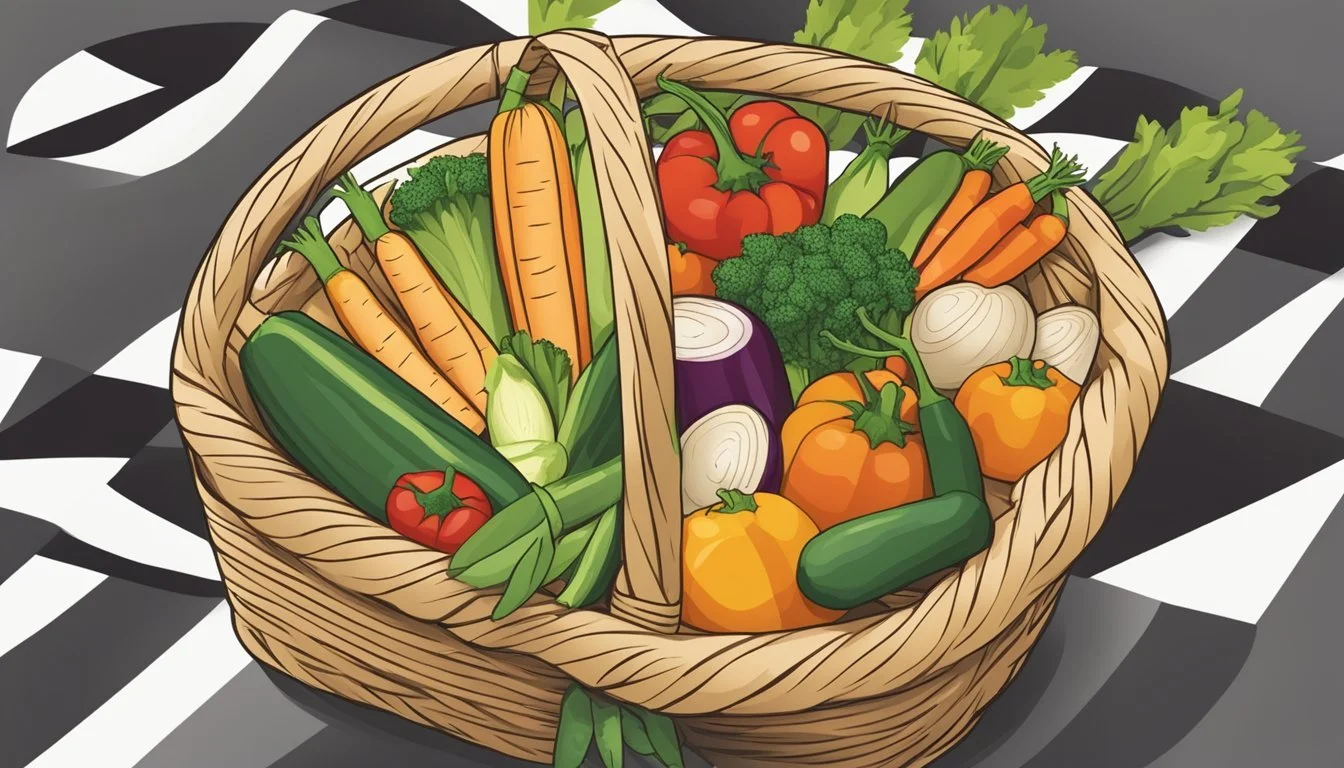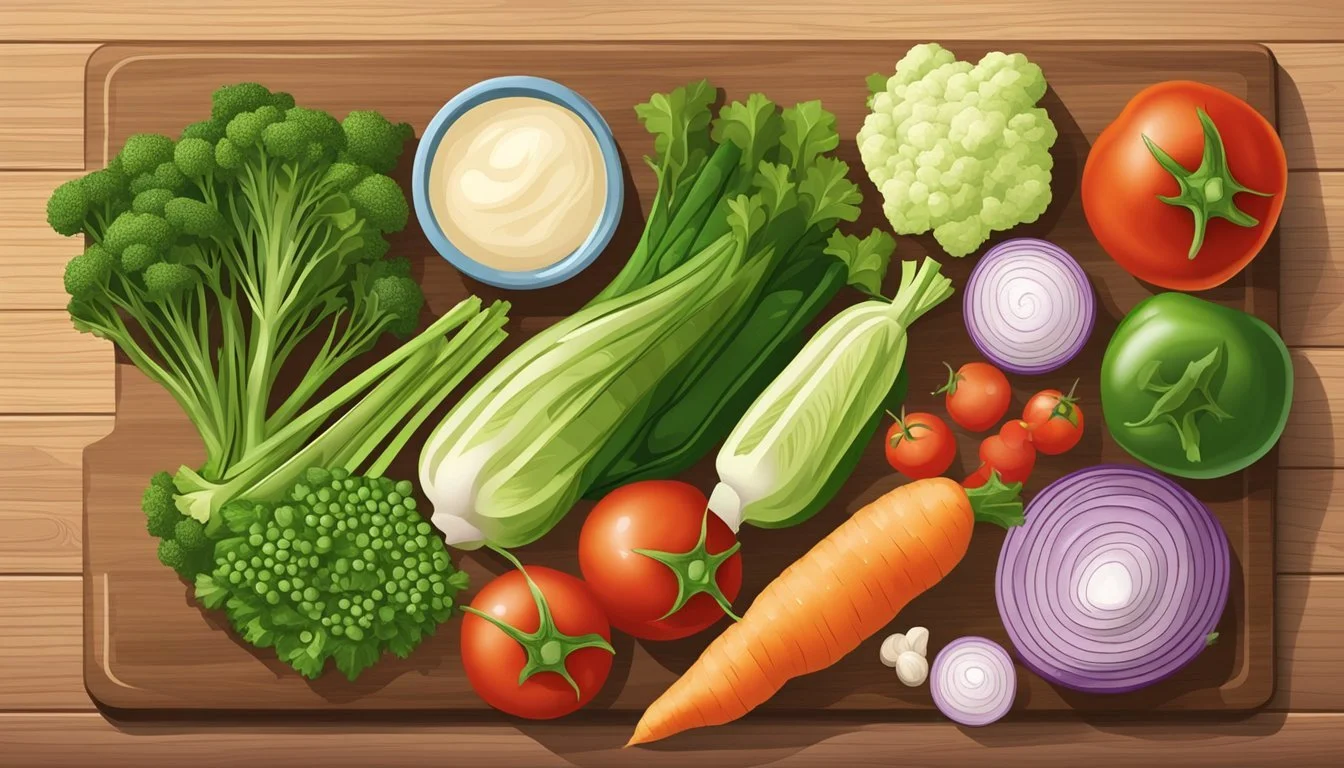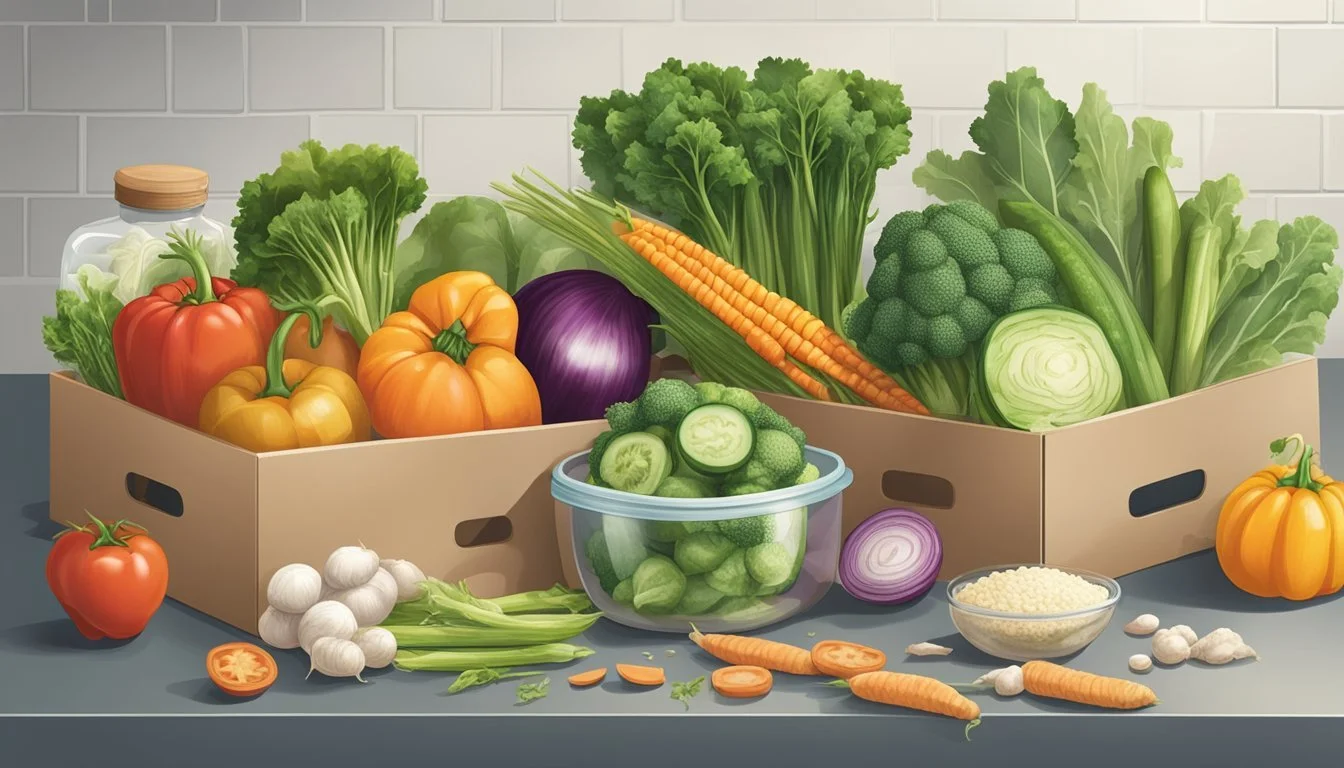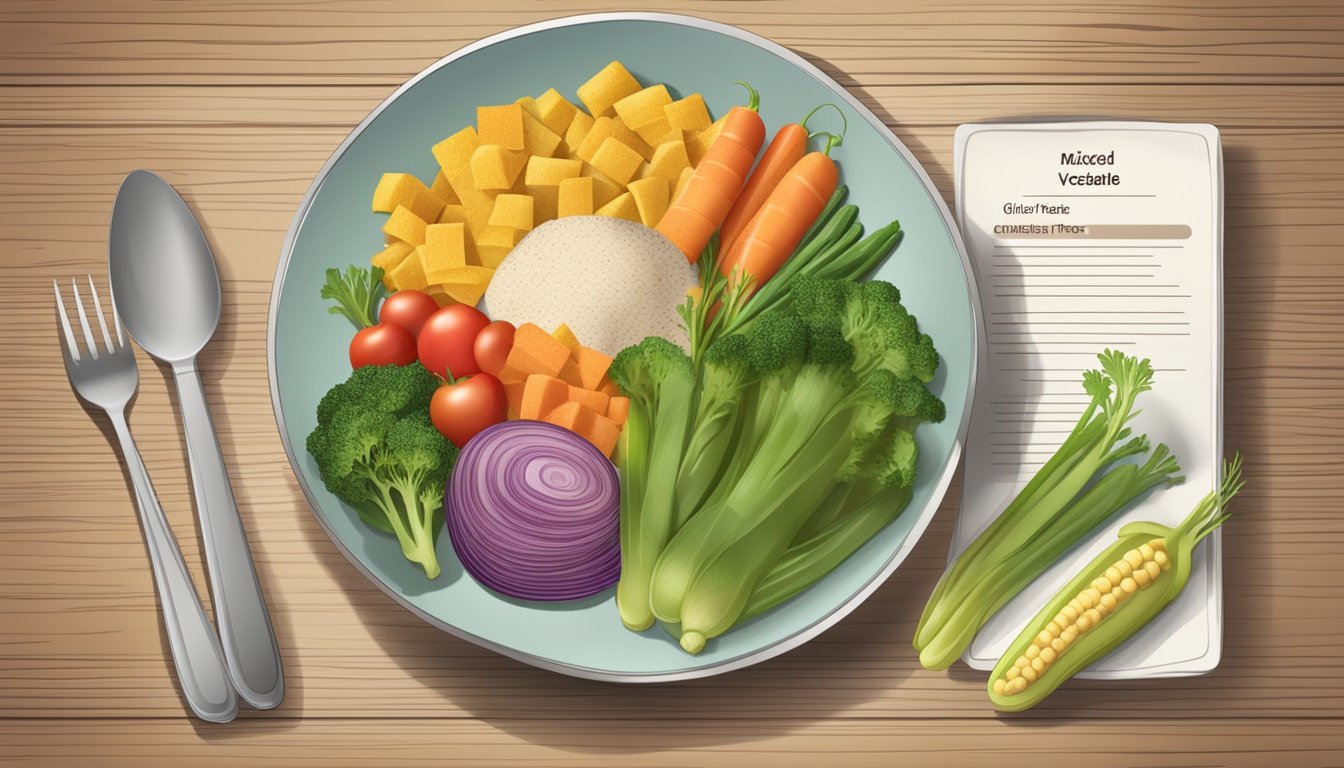How Long Do Gluten-Free Mixed Vegetables Last?
Storage Tips and Shelf Life Explained
Navigating a gluten-free diet can be challenging, especially when it comes to understanding how long different foods last. For those relying on mixed vegetables as a staple in their diet, knowing their shelf life is essential in meal planning and maintaining a balanced diet. Gluten-free frozen mixed vegetables can last up to 8 months in the freezer when stored properly.
Proper storage is key to maximizing the longevity of gluten-free vegetables. They should be kept in their original packaging or transferred to an airtight container to prevent freezer burn. Ensuring your freezer is consistently at or below 0°F (-18°C) will also help to maintain the quality of the vegetables over time.
Consumers should also be aware of the signs indicating that frozen vegetables may no longer be good to eat, such as significant color changes, ice crystals, or an off smell. Keeping an eye on these signs can help prevent the consumption of spoiled food, ensuring that meals are both safe and enjoyable.
Understanding Gluten-Free
A gluten-free lifestyle requires attention to dietary detail and awareness of potential health conditions like celiac disease or gluten intolerance. This section explains the fundamental aspects critical to understanding gluten-free choices.
Defining Gluten and Its Effects
Gluten is a protein found in wheat, barley, and rye. It helps food maintain its shape, acting as a binder. While it is harmless to most people, gluten can trigger adverse reactions in some individuals.
For those with celiac disease, gluten causes an autoimmune response. This reaction damages the small intestine's lining, leading to malabsorption of nutrients. In others, gluten may cause discomfort without damaging the intestine, often referred to as gluten intolerance.
Gluten-Free Diet and Celiac Disease
Celiac disease is a severe autoimmune disorder. When an affected person ingests gluten, their immune system attacks the small intestine's villi, tiny structures essential for nutrient absorption. Undiagnosed or untreated, this can lead to severe health issues.
A gluten-free diet is the only effective treatment for celiac disease. This involves avoiding all gluten-containing foods to prevent symptoms and intestinal damage. Safe alternatives often include rice, corn, and gluten-free grains like quinoa.
Non-Celiac Gluten Sensitivity
Non-celiac gluten sensitivity (NCGS) is a condition where individuals experience symptoms related to gluten without having celiac disease or wheat allergy. These symptoms can include bloating, abdominal pain, and fatigue.
The exact cause of NCGS is not well-understood, and there are no specific tests for diagnosis. Nonetheless, those with NCGS often find relief by adopting a gluten-free diet. It’s important for anyone experiencing symptoms to consult with a healthcare provider before making dietary changes.
Characteristics of Fresh and Frozen Vegetables
Fresh and frozen vegetables each offer unique advantages. By examining nutritional content, texture and flavor, as well as availability and seasonality, you can choose the best option for various needs.
Nutritional Comparison
Fresh and frozen vegetables both contain essential vitamins, minerals, and antioxidants. Fresh vegetables are typically consumed closer to their harvest time, preserving maximum nutrient content.
Frozen vegetables are often flash-frozen at peak ripeness, retaining most of their nutrients. Some water-soluble vitamins, such as vitamin C, may decrease slightly during freezing, but frozen options generally remain nutritionally robust.
Frozen options can sometimes provide more consistent fiber and protein levels, as they are harvested at optimal times and preserved immediately.
Texture and Flavor Profiles
Fresh vegetables often offer superior texture and flavor due to their minimal processing. They have a natural crispness and vibrant taste that is hard to match.
Frozen vegetables can maintain a good texture if consumed shortly after cooking. Freezing can sometimes alter the texture, making certain vegetables softer or mushy when thawed. However, modern freezing techniques help minimize these changes.
Flavor profiles in fresh produce are generally more robust. Frozen vegetables might need enhancements with seasonings to match the fresh taste.
Availability and Seasonality
Availability of fresh vegetables depends heavily on the region and season. Certain vegetables are only available during specific times of the year, which can limit choices in off-seasons.
Frozen vegetables provide year-round availability without concern for seasonality. They enable access to a wide variety of vegetables irrespective of the local growing season.
In regions with harsh climates or limited growing seasons, frozen vegetables offer a convenient and nutritionally reliable alternative to fresh produce, ensuring consistent dietary intake.
Storage Techniques for Mixed Vegetables
Proper storage of mixed vegetables is crucial to maximize shelf life and maintain quality. Key techniques include refrigeration, freezing, and storage of canned vegetables, each with specific steps to ensure freshness.
Best Practices for Refrigerating Produce
Refrigerating mixed vegetables can significantly extend their freshness. Use a plastic bag or container with tight-fitting lids to minimize air exposure. Keep vegetables in the crisper drawer of the refrigerator, as it maintains optimal humidity levels.
Cut vegetables like carrots, bell peppers, and broccoli should be stored separately to prevent cross-contamination. Use a paper towel to absorb excess moisture within the storage container to prevent spoilage. Mixed salads should be dressed only before serving to keep ingredients crisp.
Optimal Conditions for Freezing Vegetables
Freezing is an effective method to store mixed vegetables long-term. Blanch vegetables before freezing to inactivate enzymes that could cause spoilage. Submerge vegetables briefly in boiling water, then transfer them to an ice bath.
Pat vegetables dry and spread them out on a baking sheet to freeze before transferring to airtight bags or containers. Label containers with the date of freezing. Properly frozen vegetables, such as frozen peas or mixed veggie blends, can last up to eight months without significant loss of flavor or nutrients.
Longevity of Canned Vegetables
Canned vegetables offer convenience and have a long shelf life, often up to one year past the canned date if unopened. Store canned vegetables in a cool, dark place away from direct sunlight. Once opened, transfer the contents to an airtight container and refrigerate.
Canned mixed vegetables can last approximately 3-4 days in the refrigerator after opening. Adding a bit of olive oil can help maintain freshness and enhance flavor. Always check for any signs of spoilage like unusual odors or textures before consuming.
Health Considerations in Gluten-Free Mixed Vegetables
Gluten-free mixed vegetables offer significant health benefits, from providing essential nutrients to aiding in digestion. These benefits play a crucial role in maintaining a balanced diet and addressing potential digestive issues.
Role of Vegetables in a Balanced Diet
Vegetables are key components in a balanced diet, providing essential vitamins, minerals, and fiber. They contribute to overall health by supplying nutrients like vitamin C, potassium, and folate. Including a variety of vegetables ensures a good mix of these nutrients.
Mixed Vegetables: When combined, mixed vegetables can provide a combination of these nutrients, often surpassing what a single vegetable can offer. For example, a mix of carrots, broccoli, and bell peppers delivers a range of vitamins A, C, and K, among others.
Fiber: Fiber is particularly important, as it helps maintain digestive health and can prevent issues like constipation. Vegetables like peas and green beans are rich in fiber, making them excellent choices for a gluten-free diet.
Digestive Benefits and Potential Issues
Digestive health is a significant consideration with gluten-free mixed vegetables. Fiber from vegetables supports bowel regularity and may help alleviate common digestive issues, such as bloating and constipation.
Fiber Content: The high fiber content in vegetables like broccoli and Brussels sprouts aids digestion and can reduce fatigue by helping the body maintain consistent energy levels.
Potential Issues: Some individuals with sensitive digestive systems might experience discomfort from high-fiber vegetables. It’s important to introduce these foods gradually and monitor any adverse reactions.
Digestive Support: Mixed vegetables can be paired with gluten-free grains, such as quinoa or rice, to create balanced meals that provide both macros and micros. This combination not only supports digestion but also enhances nutrient intake.
These considerations emphasize the importance of mixed vegetables in a gluten-free diet, ensuring optimal health benefits and addressing potential digestive issues.
Identifying Gluten-Free Produce
Effective identification of gluten-free produce is crucial for those adhering to a gluten-free diet. Key aspects include understanding labeling and certification standards, and recognizing cross-contamination risks.
Labeling and Certification of Gluten-Free Products
Consumers must look for gluten-free labels that adhere to established standards. In the United States, the FDA mandates that products labeled as gluten-free must contain less than 20 parts per million (ppm) of gluten. Products may also bear certifications from organizations such as the Gluten Intolerance Group (GIG), which provides additional assurance.
It's essential to carefully read ingredient lists, even if a product claims to be gluten-free. Some products might be naturally free of gluten but could be processed in facilities that handle gluten-containing grains.
Recognizing Cross-Contamination Risks
Cross-contamination is a significant concern when identifying gluten-free produce. This occurs when gluten comes into contact with gluten-free products through shared equipment or processing facilities.
To minimize risks, consumers should opt for produce that is clearly labeled as gluten-free and check for notes on packaging that state whether the product has been processed in a gluten-free facility.
When handling fresh produce at home, it's important to use clean utensils and workspaces to avoid contamination. Educating oneself on these practices ensures that gluten-free produce remains free from unintended gluten exposure.
Preparing Gluten-Free Vegetable Dishes
Preparing gluten-free vegetable dishes involves careful ingredient selection and cooking methods to prevent contamination. Proper handling ensures not only taste but also safety for those with gluten sensitivities.
Choosing Gluten-Free Ingredients for Recipes
Selecting gluten-free ingredients is essential. Opt for fresh, organic, whole foods without any additives to avoid hidden gluten. Vegetables such as beans, corn, and rice are naturally gluten-free. When using oils like olive oil, make sure they are free from cross-contamination.
Ingredients to Use:
Fresh Vegetables: Beans, corn, zucchini, bell peppers.
Whole Grains: Rice, quinoa.
Fats: Pure olive oil, coconut oil.
Check labels to ensure seasonings and sauces are gluten-free. Many pre-packaged spice mixes and condiments can contain gluten. Choose pure herbs and make your own blends when possible.
Avoiding Contamination in Cooking Methods
To maintain gluten-free status, strict procedures are necessary. Use separate utensils, cutting boards, and pans designated for gluten-free food. Thoroughly clean all surfaces before and after preparation.
Key Steps:
Dedicated Equipment: Use separate tools for gluten-free items.
Cleaning: Ensure all surfaces and utensils are thoroughly washed.
Storage: Store gluten-free foods in airtight containers, away from gluten-containing items.
Cooking techniques like roasting vegetables with olive oil and spices, making rice dishes, or creating vegetable-loaded meals all need careful attention. Baking on parchment paper and avoiding shared condiments are simple ways to prevent gluten exposure.
Impact of Processing on Vegetable Shelf Life
Processing significantly affects the shelf life of vegetables. While whole foods tend to maintain freshness for longer, processed vegetables often rely on additives and preservatives to extend their usability. These methods impact not only longevity but also nutritional value.
Processed vs. Whole Vegetables
Whole vegetables, such as carrots and beets, typically last for 1-2 weeks when stored correctly in a crisper drawer. The absence of processing helps maintain their natural state and nutrients. Frozen veggies, for example, gain longevity from the freezing process, preserving their condition for several months.
On the other hand, processed vegetables, like pre-chopped or canned options, may deteriorate faster once opened. Exposure to air and moisture during processing can decrease shelf life. Pre-cut items require refrigeration and have a reduced lifespan compared to their whole counterparts.
The Effects of Preservatives and Additives
Preservatives and additives play a vital role in extending the shelf life of processed vegetables. Chemical preservatives can inhibit microbial growth, slowing down spoilage. For instance, canned veggies often contain sodium-based preservatives to prevent decay.
While effective, these additives can also impact the overall nutritional quality. Some processes may reduce the levels of essential vitamins and minerals. However, frozen vegetables typically retain more nutrients due to rapid freezing techniques that minimize nutrient loss.
Understanding these impacts helps in making informed choices about consuming either whole or processed vegetables, balancing convenience, and nutritional value.
Selecting High-Quality Vegetable Varieties
When choosing high-quality vegetable varieties, consider factors like whether they are organic or conventional, and the importance of prioritizing specific vegetables to buy organic.
Organic vs. Conventional: Understanding the Difference
Organic vegetables are grown without synthetic pesticides, fertilizers, or genetically modified organisms (GMOs). Organic farming practices aim to promote ecological balance and conserve biodiversity. These vegetables usually have higher levels of certain nutrients and fewer pesticide residues.
Conventional vegetables, on the other hand, are grown using modern agricultural methods that may involve synthetic chemicals and GMOs. While they may cost less and have a longer shelf life due to preservatives, they might contain more pesticide residues.
Understanding these differences helps consumers make informed choices. Key factors such as nutrition content, pesticide residue levels, and environmental impact can guide your decision between organic and conventional options.
The 'Dirty Dozen': Vegetables to Buy Organic
The Environmental Working Group (EWG) publishes an annual list called the “Dirty Dozen”, which details the vegetables and fruits with the highest pesticide residues. For those focusing on consuming fewer pesticides, it is advisable to buy these vegetables in their organic form:
Strawberries
Spinach
Kale
Nectarines
Apples
Grapes
Bell Peppers
Cherries
Peaches
Pears
Celery
Tomatoes
By prioritizing organic versions of these vegetables, consumers can reduce their exposure to harmful chemicals. This selection helps balance health benefits with pesticide risk management, ensuring safer consumption. Brands and companies offering certified organic options make it easier to incorporate these healthier choices into daily diets.
Nutritional Information and Serving Suggestions
Gluten-free mixed vegetables offer a nutritious and versatile option for any diet. They provide essential vitamins and minerals while being low in calories and high in fiber. Knowing their nutritional content and including them in your meals can enhance your dietary routine.
Caloric and Macronutrient Content
Gluten-free mixed vegetables are low in calories while being rich in essential nutrients. A typical serving of about one cup might contain roughly 30-50 calories, depending on the vegetables included. For example, green beans and Brussels sprouts have around 40 calories per cup, while tomatoes and peppers contain closer to 30 calories.
These vegetables are low in fat and high in dietary fiber, contributing to satiety and digestive health. They also provide essential macronutrients:
Carbohydrates: Primarily in the form of fiber and natural sugars.
Proteins: Although not high, they do contribute some plant-based protein. Edamame, for instance, offers a higher protein content.
Vitamins such as Vitamin C (found in peppers and tomatoes) and Vitamin K (in Brussels sprouts) are abundant. Minerals like potassium and folate are also present.
Incorporating Vegetables into Meals and Snacks
Incorporating gluten-free mixed vegetables into meals and snacks can be straightforward and beneficial. For breakfast, consider adding them to an omelet with eggs and a sprinkle of seeds for extra nutrients. At lunch, a mixed vegetable salad with nuts and beans can be both filling and nutritious.
For dinner, roasted Brussels sprouts and green beans can pair well with grilled proteins. Snacks can include raw vegetables like pepper slices with hummus or a mix of edamame and tomato halves.
These vegetables can be steamed, roasted, or even enjoyed raw, making them adaptable to various culinary uses and preferences. Regularly integrating them into your diet ensures a rich intake of vitamins, minerals, and fiber, enhancing overall health.
Shopping and Brands Guide
When shopping for gluten-free mixed vegetables, awareness of brand options and availability is vital. Consumers should prioritize products labeled gluten-free and know where to find these items to ensure a hassle-free shopping experience.
Choosing Gluten-Free Vegetable Brands
Selecting the right brands can simplify the process of buying gluten-free mixed vegetables. Brands such as 365 by Whole Foods Market offer a variety of naturally gluten-free options, though some may not carry a specific gluten-free label. Reading ingredient lists is essential to verify that no gluten-containing substances are present.
Other reliable brands include Birds Eye and Green Giant, known for their extensive selection of frozen vegetables. These companies often provide clear labeling, making it easier to choose safe products. It's also beneficial to consider packaging that explicitly states gluten-free to avoid any uncertainties.
Where to Find Gluten-Free Vegetables
Gluten-free mixed vegetables are readily available in many supermarkets. Stores like Whole Foods Market carry an extensive selection of fresh and frozen varieties. Additionally, retailers such as Trader Joe’s and Walmart offer a wide range of gluten-free options, ensuring broad availability.
Online shopping can also be convenient. Websites like Amazon and Instacart provide various gluten-free vegetable products, allowing consumers to compare brands and prices easily. This makes it simple for those with dietary restrictions to find suitable options without the need for in-person shopping.
In summary, by choosing trusted brands and knowing where to locate gluten-free mixed vegetables, consumers can enjoy stress-free shopping while adhering to their dietary needs.


